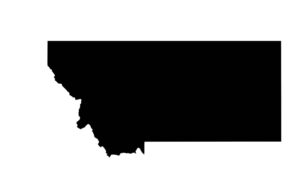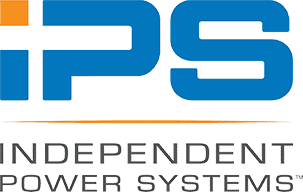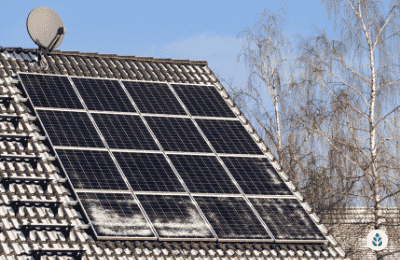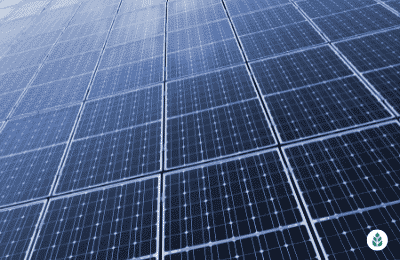
How Much Do Solar Panels Cost in Montana? (2024 Savings Guide)
In this guide on the cost of solar panels in Montana, you’ll learn:
- What the average cost of going solar in The Treasure State is
- How Montanans can save money when going solar
- Which local installation companies have the best prices
Each product and or company featured here has been independently selected by the writer. You can learn more about our review methodology here. If you make a purchase using the links included, we may earn commission.
Montana can be a great place for home solar, but its snowy winters and northern latitudes make it a bit trickier to find a suitable system. Even with those challenges, the average Montana household stands to save $20,716 by switching to solar, so it’s more than worth the time and effort it requires for most residents.
In this article, we’ll discuss the average cost of solar panels in Montana, including some factors that determine system costs, some handy tips for saving money and more.
What Will Your Solar Panel System Cost in Montana?
The average cost per watt of solar panels in Montana is $3.22, and the average size for a system is 9 kilowatts (kW). That means that the overall cost of solar in Montana before any tax credits is $28,980. The federal investment tax credit (ITC) can knock that price down to just over $20,000.
Solar system sizes in Montana range between 6 kW and 12 kW in most cases, depending on your home’s energy needs, the direction your roof faces, the average snowfall in your area and other details about your property. Prices also vary, with most Montana residential solar units costing between $13,524 and $27,048 after the federal tax incentive.
The table below summarizes the average cost for different sizes and includes information about related energy use and lifetime savings.
| Solar Power System Size | Energy Use (per month) | House Size (sq ft) | Total Cost | Cost After the Federal ITC | Energy Savings (over 25 years, after system is paid off) |
| 6 kW | 600 kWh | 1,600 | $19,320 | $13,524 | $10,056 |
| 7 kW | 700 kWh | 1,800 | $22,540 | $15,778 | $11,732 |
| 8 kW | 800 kWh | 2,000 | $25,760 | $18,032 | $13,408 |
| 9 kW | 900 kWh | 2,200 | $28,980 | $20,286 | $15,084 |
| 10 kW | 1,000 kWh | 2,400 | $32,200 | $22,540 | $16,760 |
| 11 kW | 1,100 kWh | 2,600 | $35,420 | $24,794 | $18,436 |
| 12 kW | 1,200 kWh | 2,800 | $38,640 | $27,048 | $20,112 |

OnSite Energy

Local Service
Average cost
Pros
- Excellent reputation
- Great warranty coverage
- Offers products from leading manufacturers
- Certified B Corp
Cons
- No leases or PPAs
- Slightly expensive

SBS Solar

Local Service
Average cost
Pros
- Outstanding customer service
- Full-service home energy solutions
- Great warranty coverage
Cons
- No leases or PPAs
- Limited brands of solar equipment available

Solar IPS

Regional Service
Average cost
Pros
- Offers products from leading manufacturers
- Great warranty coverage
- Many financing options
Cons
- Some reported communication issues
- Slightly limited service offerings
How Do Montana’s Solar Prices Compare to the National Average?
Solar prices in Montana are below the national average. The cost per watt for solar panel systems in Montana is $3.22, which is $0.11 below the U.S. average of $3.33. This means that solar equipment in Montana is more affordable than it is in most states on a per-watt basis, but that doesn’t tell the whole story since the overall cost of a system also depends on the size you need.
The good news for Montanans is that all-in costs for solar in Montana are also below the U.S. average. The average price of a solar energy system in Montana is $20,286, while the nationwide average is slightly higher at $20,979.
According to the Energy Industries Association, Montana residents use around 858 kWh per month compared to the national average of 881 kWh per month. Even though Montana households technically consume less energy than the average U.S. home, it’s not enough to mean Montanans can get away with smaller solar panel systems. The average size for a system in Montana is 9 kW, which is the same as the overall countrywide average.
The bottom line is that solar equipment is cheaper in Montana than in most other states, so transitioning your home to renewable energy is more affordable in Big Sky country than in most other areas in the country, even though system size requirements are the same.
What Are the Main Factors of Solar System Costs in Montana?
Many things contribute to the overall cost of solar in Montana, but the three primary cost factors are as follows:
- The average energy demands and low electricity rates in Montana
- The below-average amount of sunlight in Montana
- The net metering policy in Montana
The Average Energy Demands and Low Electricity Rates in Montana
The average household energy consumption in Montana is 858 kWh, which is fairly close to the national average of 881 kWh. That means that Montanans require average-sized 9 kW systems to offset their energy costs, which keeps prices around average as well.
Bear in mind that your home may consume more or less energy depending on how many people live there, how much time you spend at home and other details of your daily habits. You should consult local solar companies and request some free quotes to get an estimate for the system size you need to match your energy usage.
Another thing to consider is that electricity rates are much lower in Montana than in most other states. The average energy bill in Montana is $112.40 per month, which is more than $25 less than the U.S. average of $139.06.
This means that purchasing a larger system to generate a surplus of energy is less beneficial in Montana than it is in most states. Selling your excess energy back to the grid won’t save you as much money as it would in a state with higher electricity prices, so you can save money by buying a system that just offsets your monthly power consumption and doesn’t provide much excess.
The Below-Average Amount of Sunlight in Montana
Montana gets just 189 sunny days per year, which means Montanans miss out on more than two weeks of sunshine compared to the average U.S. resident. Montana’s northerly latitudes and abundant snowfall also limit the amount of sunlight your solar panels will be exposed to, so it’s a good idea for Montana residents to invest in more energy-efficient monocrystalline photovoltaic (PV) panels.
High-efficiency panels are better at converting sunlight to usable electricity, so they’re perfect for places like Montana, where sunlight is limited. Maxeon makes the highest efficiency solar PV system, boasting an impressive 22.8% efficiency rating.
Maxeon panels are great for low-light states like Montana, but they’re also expensive. They cost about $4.00 per watt, which is significantly higher than the overall average cost of $3.33. It’s also considerably higher than the average price of tier-one solar PV panels, which is around $3.75 per watt.
We recommend consulting with local installers and asking about their high-efficiency options. The best solar companies in Montana will be familiar with the panels that work best in Montana, but don’t be afraid to ask questions. There are options between top-of-the-line panels like Maxeon and budget panels, including REC, QCells, Canadian Solar and more.
The Net Metering Policy in Montana
Net metering — sometimes called net energy metering (NEM) — policies let you sell any excess energy your system produces back to the grid for energy credit. In some places, NEM policies allow you to sell your excess energy at the retail electricity rate.
Unfortunately, most Montana utility companies — like Northwestern Energy and Missoula Electric Cooperative, Inc. — use an avoided-cost rate for energy buyback, which reimburses you for the cost of energy generation. Ultimately, this rate is much lower than the retail electricity rates you’d pay if you were importing the energy rather than exporting it.
Avoided-cost NEM combined with Montana’s lower-than-average electricity rates means that it doesn’t make sense for Montana residents to oversize their systems. Without any incentive to buy a larger system than they need, Montana homeowners can save money by just buying a system that offsets their energy consumption. This does lead to lower overall system prices.
Watch Below: Learn What To Know Before Going Solar in Montana
Additional Costs of Going Solar in Montana
The upfront costs of purchasing solar panels and paying for your solar panel installation labor make up the bulk of the total cost of going solar in Montana, but there are some other costs you should think about when you’re considering your budget. These include:
- Building permits: Installing solar panels on your home requires building permits, which cost between $50 and $450, depending on where you live in the state. Your solar installer should be able to help you with these, and many installers will handle permitting for you, although they’ll still pass the fees onto you.
- Grid connection fees: You also have to pay for having your system connected to the power grid. Getting your system connected to the grid requires you to fill out an interconnection application, which costs between $50 and $150, on average. Again, your solar contractor may handle this for you, and this cost may or may not be already included in your quote.
- Product markup and admin fees: Most solar installation companies markup the products they sell to turn a profit. How much of a markup there is varies between companies, which is why it’s important to get a few quotes from different installers for comparison. Some Montana solar companies also include administration fees in their installation costs. These fees usually cover things like permitting, filing for incentives and solar rebates and grid interconnection applications,
- Additional solar equipment: Finally, keep in mind that your system’s total cost will depend on more than just the price of the panels you choose. Major add-ons like batteries and electric vehicle (EV) chargers raise the cost of your system considerably, but so do incidental components like conduit, wiring, squirrel guards, snow guards and inverters. Some companies include these costs in the base price they quote you during installation, while others add it on at the end, so be sure to ask during your initial consultation.
What Maintenance Costs Can Solar Owners Expect in Montana?
Solar maintenance is generally not required in Montana. One of the only things some homeowners pay extra for is panel cleaning services, which total between $100 and $150 twice per year. These services do remove debris from your panels to help boost efficiency. However, the rain and snow in Montana should keep your panels clean enough, so you shouldn’t have to worry about these charges.
Aside from that, having a solid warranty for your solar equipment should cover all other repairs or necessary maintenance in Montana. The best warranties protect your system from weather-related damage and problems that arise due to poor workmanship during installation. They also provide performance guarantees, which offer peace of mind that your system will continue to function near its advertised performance for 25 years.
The standard warranty in the solar industry covers equipment and energy production for 25 years and workmanship for 10 years. It’s becoming more common for companies to offer extended workmanship warranties that also last for 25 years, and we strongly recommend choosing a company that offers one if you can to help avoid paying for maintenance out of pocket.
Which Solar Financing Options Will Help You Save the Most in Montana?
There are four main ways you can pay for your solar in Montana: cash, loan, lease or power purchase agreement (PPA). Each option has its advantages and disadvantages, but we encourage people to pay in cash or via a solar loan since these options lead to panel ownership.
Cash purchases have the highest upfront costs, but they also save you the most money in the long run. Buying your system outright in cash means that you start saving money on your electric bills immediately, lowering the amount of time it takes to recoup your initial investment and increasing your lifetime savings — $20,716 in Montana, on average, with a cash purchase.
If you can’t afford to pay for your solar panels in full, the next best option is financing the purchase with a loan. Solar loans let you spread your payments out over time, just like car loans and home loans, reducing your initial costs but causing you to pay more over time in interest. The downside to financing your panels with a loan in Montana is that you reduce your lifetime savings by about $5,000 and increase your payback period by four years, on average.
Both cash purchases and loans lead to panel ownership, which is why we recommend them to most people. Having a solar array on your roof increases your home value, which means you can recoup most of your initial investment if you sell your home. Leases and PPAs do not lead to ownership, which also means that you can’t take the federal tax credit — an average value of over $8,694 in MT.
Solar leases seem attractive at first glance because they don’t require you to pay anything upfront and often have lower monthly payments than loans. The downside is that you have to make monthly payments for the entire term of your lease, and you’re left with nothing once the lease is up. Leases save you even less money than loans, with $5,000 total lifetime savings being average in Montana.
PPAs are similar to leases in that you never wind up owning your solar energy system. Unlike leases, PPAs charge you for the electricity your system generates rather than for the right to use the system altogether. You can think of a PPA like purchasing power from a tiny electric company that produces its energy via the panels on your roof. PPAs offer the lowest lifetime savings, usually around $4,000 in Montana.
If you’re not sure which financing option is right for you, you can use our solar calculator to estimate how much your system will cost, and then choose the option with the best long-term benefits from the table below.
You can also get quotes from SunPower or Solar IPS to keep your options open. These are two of what we consider the best solar companies in Montana, and they both accept all four financing options.
| Financing Method | Total 25 Year Savings (estimated) | Initial Costs (estimated, after the federal tax credit) | Monthly Payments (estimated) | Payback Period (estimated) |
| Cash | $20,716 | $20,286 | $0 | 13 years |
| Loan | $16,000 | $0 | $125 – $225 | 17 years |
| Lease | $5,000 | $0 | $100 | N/A |
| PPA | $4,000 | $0 | $100 | N/A |
What Are Other Ways You Can Save When Going Solar in Montana?
Solar systems are relatively affordable in Montana, but there are ways you can save even more money if you’re clever. The three main ways to save money when transitioning to solar in Montana include the following:
- Install solar batteries
- Install an appropriately-sized system
- Take advantage of Montana’s solar incentives and rebates
Install Solar Batteries
Solar batteries add about $10,000 to the cost of your solar system, on average, but they’re worth it in a state like Montana with avoided-cost net energy metering.
Including a battery backup in your system lets you store any extra energy your panels produce for use at a later time. This is more beneficial than selling that energy back to the grid in Montana because utility companies reimburse you at the avoided-cost rate, which is always lower than the retail electricity price. Ultimately, this can increase your long-term savings.
Having a battery backup offers more benefits than just saving money. Batteries let you power your home with clean energy even when your panels aren’t producing electricity, like at night or on cloudy days. Batteries can also save you from power outages by powering essential home systems during blackouts.
Install an Appropriately-Sized System
Montana’s electricity rates are below average compared to the rest of the U.S. That means that the benefit you get from having an oversized system is less than it is in a state with higher electricity prices. Ultimately, this means there’s no incentive to install a system that’s larger than you need, as that would only increase the initial costs of going solar.
Making sure you get a system that’s the right size for your home is one of the most important things to pay attention to early on in the process. Solar companies will assess your home’s energy needs during an initial consultation, but you should prepare by seeing how much energy you use in a month yourself. That way, you’ll have a ballpark to go by to determine if the quote you get makes sense.
Take Advantage of Montana’s Solar Incentives and Rebates
Solar incentives and rebate programs make up some of the best potential savings for solar arrays.
The federal credit is the largest credit available to Montanans. It’s important to remember that you’re only eligible for the federal solar tax credit if you purchase your system in cash or via a loan.
Montana also has several state incentives and local benefits that can help reduce the cost of going solar in the state. You can learn about them in detail in our full review of Montana’s solar incentives.
The biggest state-level Montana solar incentive is the Alternative Energy Revolving Loan Program, which helps homeowners secure low-interest solar loans. How much you can save by taking advantage of this program depends on what rate you qualify for and the size of the system you purchase.
Another great state-sponsored program is the Renewable Energy Systems Exemption. This is a state tax credit that offers a property tax exemption that prevents your property taxes from increasing when you install solar panels. Solar systems typically increase the value of your home, which would normally cause your property taxes to increase. This program prevents that from happening, which means you’ll save several thousand dollars over the course of your system’s life.
What Are the Typical Costs of Montana’s Solar Installers?
The typical price of a solar system in Montana ranges from $13,524 to $27,048. Part of that variation is due to differences between installers. Different companies mark up their products to different extents, and labor rates also vary from one installer to the next.
The following table compares several of the top solar installers in Montana to give you an idea of how prices vary between different companies.
| Solar Company | Superlative | EcoWatch Rating | BBB Rating | Average Cost |
| SunPower | Best National Installer | 5/5 | A+ | $$$$ |
| Tesla | Best Technology | 4.5/5 | A+ | $$ |
| Solar MT | Best Regional Installer | 4/5 | A+ | $$$ |
| SBS Solar | Best Local Installer | 4.5/5 | N/A | $ |
| OnSite Energy | Best Social Impact | 5/5 | A+ | $$$$ |
How Are Solar Costs and Regulations Trending In Montana?
The cost of solar in Montana has fallen 54% over the last ten years, according to the SEIA. We see no reason why this trend wouldn’t continue since competition in the solar industry is increasing, and manufacturing costs continue to decline as advancements in the process are made.
Montana ranks 40th in the country in installed solar capacity, with 242 MW installed through the first quarter of 2024. As solar adoption increases and state and federal governments continue to push for renewable energy, states with a lot of room to grow, like Montana, stand to see prices fall the most as companies compete with each other to fill the sudden demand.
Montana’s solar regulations and incentive programs don’t seem like they’re going to change much in the near future. Montana already has a renewable portfolio standard (RPS) in place and solid incentive programs, so it’s unlikely that any new legislation will cause a significant shift in its solar policy anytime soon.
Going solar is more affordable in Montana than it is in most places, and the solar landscape in Montana has recently reached a balance where enough competition and falling tech costs have made it so that the barrier to entry is lower than ever. If you want to hop on the solar bandwagon and start saving money, use the tool below to get some free solar quotes from local companies.
Read More About Going Solar
- Best Solar Installers in Montana
- How Much Can You Save With Solar Incentives in Montana?
- Is Solar Worth It in Montana?
The cost information presented in this article is derived from a comprehensive analysis, incorporating data from multiple industry sources. The average cost per watt per state was calculated based on figures from Consumer Affairs, Energy Sage, and Berkeley Lab’s Electricity Markets & Policy Department. Additionally, monthly energy consumption and the average monthly cost of electricity were sourced from the U.S. Energy Information Administration, ensuring a well-rounded and accurate representation of the information presented.
FAQs: Montana Solar Panel Costs
We get asked a lot of questions about the cost of going solar in Montana. Below, we’ll answer some of the questions we see most often from residents in your area.
No, getting a solar energy system for free is not possible in Montana — or anywhere else, for that matter. However, there are financial programs such as the federal income tax credit, local rebates, and net energy metering programs that help lower the costs of purchasing solar panels in Montana. You could also finance your panels with a lease or PPA, although we don’t recommend these options since they don’t lead to panel ownership.
Solar power systems cost between $13,524 and $27,048, on average in Montana. How much you’ll have to pay for your system depends on how much energy you use, which determines the size of the system you need. Don’t forget to ask your installer what tax exemption programs and rebates you qualify for, as these can greatly reduce the cost of going solar.
Yes, installing solar panels on your home is usually worth it in Montana. The average lifetime savings homeowners enjoy by installing solar panels in Montana is $15,189, and that’s after the panels pay for themselves. The initial costs of installing a system scare many people away, but between the savings you’ll get on your electric bills and the value solar panels add to your home, a solar array is almost always a good investment in MT.
Related articles
Top Solar Installers In Montana Cities
Comparing authorized solar partners
-
- Excellent reputation
- Great warranty coverage
- Offers products from leading manufacturers
- Certified B Corp
- No leases or PPAs
- Slightly expensive
A+Outstanding Social Impact
Having trouble deciding? Click below and use our process to receive multiple quotes instead:

 233k
233k  41k
41k  Subscribe
Subscribe 





